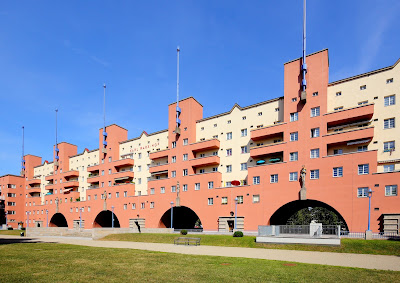The end of the Weiße Rose ("White Rose") - in memoriam Sophie (1921-1943) and Hans Scholl (1918-1943), Kurt Huber (1893-1943), Alexander Schmorell (1917-1943), Willi Graf (1918-1943) and Christoph Probst (1919-1943): on this day, 73 years ago, Sophie and Hans Scholl and Christoph Probst were executed in Munich.
The Scholl siblings, who grew up in the towns of Ludwigsburg and later Ulm, both in Württemberg, Southwestern Germany, in the 1920s, started studying in Munich in the early 1940s. As a result of their increasing renunciation of the Nazi regime and the war it had started, they founded a resistance group under the name of "Weiße Rose" (White Rose) and secretly wrote critical leaflets. The first one was printed in the summer of 1942. Their leaflets were distributed not only in Munich, but also Cologne, Stuttgart and Vienna, with a circulation of 6000 to 9000.
 |
| Memorial for the Weiße Rose at Munich University, where the Scholl siblings and Willi Graf had studied and where they were arrested on February 18, 1943 |
Sophie and Hans distributed the sixth edition of their anti-Nazi leaflets, harshly criticizing the death of almost half a million soldiers and civilians at the battle and humanitarian disaster of Stalingrad in late 1942 and early 1943, at the university of Munich on the morning of February 18th, 1943, when they were caught and apprehended by the janitor and mechanic of the university, NSDAP and SA member Jakob Schmid, and brought to the dean of the university.



